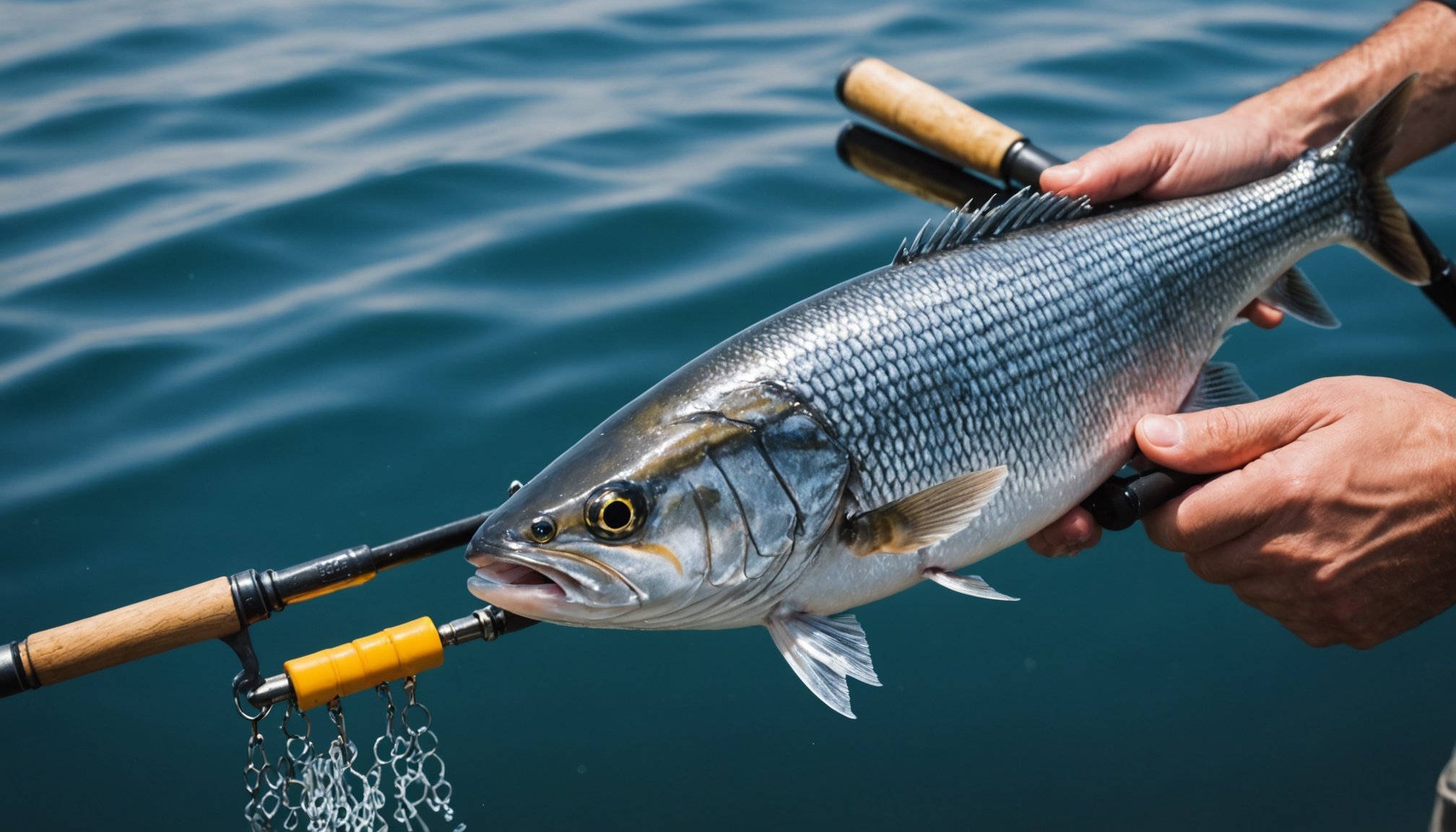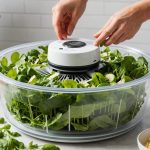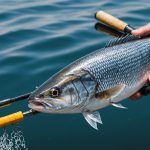Scaling fish can feel like an arduous task, but with the right scaler, it doesn’t have to be. Selecting a high-quality fish scaler makes all the difference, ensuring a smoother process and better results. Whether you’re a seasoned chef or a home cook, finding the perfect tool tailored to your needs can elevate your culinary experience. Discover the key factors to consider when choosing a scaler, allowing you to transform fish preparation from a chore into a seamless step in your cooking journey.
Understanding the Importance of Fish Scaling
Fish scaling is a fundamental step in culinary skills that significantly impacts both the flavor and presentation of a dish. Proper fish preparation starts with removing the scales, which can otherwise impart an undesirable texture and affect the taste. By ensuring the fish is well-scaled, you allow the natural flavors to shine through, enhancing the overall dining experience.
Also read : Top 5 Sturdy Kitchen Table Surfaces for High-Traffic Family Homes
The importance of fish scaling extends beyond just taste. Presentation is a crucial aspect of culinary arts, and a well-prepared fish without scales offers a visually appealing dish. The smooth surface of a scaled fish allows for even cooking and better absorption of marinades and seasonings, which are essential for achieving the desired flavor profile.
However, novice cooks often face challenges when it comes to fish scaling. The process requires precision and care to avoid damaging the delicate skin underneath. Beginners may struggle with the correct technique or the right tools, leading to incomplete scaling or even injury. To overcome these challenges, it's beneficial to invest in a good fish scaler and practice the technique regularly. Understanding the nuances of fish preparation can elevate your culinary skills and result in dishes that are both flavorful and beautifully presented.
Also to see : Ultimate Guide: Selecting a Gentle Salad Spinner for Delicate Greens Without Damage
Overview of Fish Scalpers
Selecting the right fish scaler is crucial for efficient fish preparation, and understanding the various types available can guide you in making an informed decision. Fish scalers come in several designs, each suited to different needs and preferences.
Types of Fish Scalers
-
Manual Fish Scalers: These are traditional tools, often resembling a brush or a serrated edge. They are cost-effective and offer precise control, but require more effort and time.
-
Electric Fish Scalers: Designed for speed and ease, electric scalers are perfect for larger quantities of fish. They can be more expensive and require a power source, but significantly reduce scaling time.
-
Knife Fish Scalers: These are versatile tools that combine a knife's sharpness with scaling edges. They offer dual functionality but can be challenging for beginners to handle safely.
Key Features to Consider
When choosing a fish scaler, consider the material for durability, the handle design for comfort, and the scaling mechanism for effectiveness. A good grip and a robust scaling head are essential for consistent results.
Each type of fish scaler has its advantages and disadvantages. Understanding these can help you select the best option that aligns with your cooking style and frequency of use.
Key Features to Look for in a Fish Scaler
Choosing the right fish scaler can significantly enhance your fish preparation process. Understanding the key features of a quality scaler is essential for making an informed choice.
Material and Durability
The material of a fish scaler is crucial for its longevity and performance. Stainless steel is a popular choice due to its resistance to rust and corrosion, ensuring the scaler remains effective over time. Plastic scalers, while lightweight, might not offer the same durability as metal options.
Handle Design and Comfort
The design of the handle greatly impacts the comfort and ease of use. Look for ergonomic handles that fit comfortably in your hand, reducing strain during prolonged use. Non-slip grips are also beneficial, providing better control and preventing accidents, especially when dealing with slippery fish.
Blade Sharpness and Effectiveness
The blade sharpness of a fish scaler determines its efficiency in removing scales. A sharp, well-designed blade will make the task quicker and more precise, ensuring a clean finish without damaging the fish's skin. Consider scalers with adjustable blades for versatility across different fish types and sizes.
By prioritising these essential scaler characteristics, you can select a fish scaler that not only meets your needs but also enhances your culinary experience.
Step-by-Step Guide to Using a Fish Scaler
To master the fish scaling process, it's essential to understand how to use a fish scaler effectively. Proper preparation and technique can make this task more manageable and safe.
Preparing the Fish for Scaling
Before you begin scaling, ensure the fish is properly prepared. Rinse it under cold water to remove any debris, and pat it dry with a paper towel. This will prevent slipping and allow for a more efficient scaling process. Place the fish on a stable surface, such as a cutting board, to maintain control while scaling.
Techniques for Using the Scaler Effectively
When learning how to use a fish scaler, hold the fish firmly by the tail. Start scaling from the tail towards the head, applying gentle pressure. Use short, quick strokes to remove the scales without damaging the skin. It's important to maintain a consistent angle to ensure even scale removal. Experiment with different scaler techniques to find the one that suits your style.
Tips for Achieving an Even Scale Removal
To achieve an even scale removal, regularly check your progress by running your hand over the fish's surface. This will help you identify any remaining scales. Work methodically, focusing on one section at a time, and ensure you cover all areas, including the belly and fins.
Tips for Efficient Fish Scaling
Mastering efficient fish scaling can transform your culinary experience, making it quicker and more enjoyable. By employing smart scaling techniques, you can save time and enhance the quality of your dishes.
Time-Saving Methods for Scaling Fish
To expedite the scaling process, ensure your tools are sharp and in good condition. A well-maintained scaler can significantly reduce the time spent on each fish. Additionally, practice using both hands to hold and scale the fish, allowing for a smoother, more fluid motion.
Organizing Your Workspace for Maximum Efficiency
A well-organized workspace is crucial for efficient fish scaling. Keep all necessary tools within arm's reach, such as your fish scaler, a cutting board, and a towel. Arrange your workstation so that you have ample space to maneuver the fish, ensuring a streamlined process.
Common Mistakes to Avoid While Scaling Fish
Avoid common pitfalls by maintaining a consistent angle when scaling. Applying too much pressure can damage the fish's skin, while too little may leave scales behind. Regularly check your progress to ensure all scales are removed. Lastly, be mindful of your surroundings to prevent accidents, especially when working with sharp tools.
Recommended Fish Scalers on the Market
Navigating the world of fish scalers can be daunting with numerous options available. To simplify your choice, here are some of the best fish scalers that consistently receive high marks in reviews for their performance and usability.
Overview of Top-Rated Fish Scalers
- Fish Scaler Pro: Known for its ergonomic design and durable stainless steel construction, this scaler is praised for its efficiency and comfort.
- Electric ScaleMaster: Offers rapid scaling with minimal effort, ideal for those handling large quantities of fish. Its powerful motor and ease of use make it a top-rated choice.
- QuickScale Knife: Combines a sharp blade with scaling edges, providing versatility for both scaling and filleting.
Comparison of User Reviews and Performance
User reviews highlight the Fish Scaler Pro for its precision and ease of handling, while the Electric ScaleMaster is celebrated for speed and convenience. The QuickScale Knife is appreciated for its dual functionality, though it requires more skill to use effectively.
Price Range and Where to Purchase
These top-rated fish scalers range from £15 to £50, catering to various budgets. They are widely available at kitchenware stores and online marketplaces, making them accessible for all culinary enthusiasts.
Visual Guides and Demonstrations
Visual aids, such as fish scaling videos, play a crucial role in mastering the fish scaling process, especially for beginners. These resources provide step-by-step visual instructions, enabling learners to observe techniques that are difficult to convey through text alone. Watching experienced cooks perform scaler demonstrations can significantly enhance understanding, making it easier to replicate the process at home.
Recommended Video Tutorials for Beginners
For those new to fish scaling, starting with beginner-friendly tutorials is advisable. Look for videos that offer clear, slow-paced demonstrations, focusing on fundamental techniques. Many culinary YouTube channels provide excellent resources, featuring professional chefs who explain each step in detail. These videos often cover various types of fish and demonstrate how to use different scalers effectively.
How to Find Reliable Visual Resources Online
Finding trustworthy visual resources online requires a discerning approach. Prioritize content from reputable culinary experts or established cooking platforms. Reading user reviews and checking the number of views or ratings can also help gauge the quality of a tutorial. Platforms like YouTube and Vimeo host a wealth of content, but it's essential to select videos that align with your learning pace and style.
Maintenance and Care for Your Fish Scaler
Proper scaler maintenance is essential for preserving fish scalers and ensuring they remain effective over time. Different types of scalers require specific cleaning techniques to maintain their performance and longevity.
Cleaning Techniques for Different Types of Scalers
For manual and knife fish scalers, rinse them under warm water immediately after use to remove any fish residue. Use a soft brush to clean between the serrated edges, ensuring no scales are left behind. For electric scalers, follow the manufacturer's instructions for disassembly and cleaning, typically involving wiping the exterior with a damp cloth and carefully cleaning the blades.
Storage Tips to Prolong the Life of Your Scaler
To extend the lifespan of your fish scaler, store it in a dry, cool place. Avoid leaving it in damp areas, as moisture can lead to rust, especially for stainless steel models. Consider using a protective cover or case to prevent damage from other kitchen tools.
Signs of Wear and When to Replace Your Scaler
Regularly inspect your scaler for signs of wear, such as dull blades or bent teeth. If the scaler becomes less effective or shows visible damage, it may be time to replace it. Keeping your scaler in optimal condition ensures that your fish preparation remains efficient and safe.
Expert Tips for Perfecting Your Fish Scaling Technique
For those aiming to achieve scaling mastery, gaining insights from professional chefs can be invaluable. Experts often emphasize the importance of maintaining a consistent angle while scaling, as this ensures even removal without damaging the delicate skin underneath. An effective technique is to use a gentle, rhythmic motion, which not only enhances precision but also reduces fatigue during prolonged scaling sessions.
Many chefs share personal anecdotes about overcoming initial scaling difficulties. A common challenge is managing the slippery nature of fish, which can be mitigated by using a towel to grip the fish securely. This simple adjustment can significantly improve control and safety.
For experienced cooks seeking to refine their skills, advanced techniques such as scaling under running water can be beneficial. This method helps in washing away loosened scales immediately, keeping the workspace clean and reducing the risk of scales sticking to the fish. Additionally, practicing with different fish types can broaden one's understanding of varying scale textures and thicknesses, further enhancing one's culinary expertise.
Incorporating these culinary advice and expert fish scaling tips into your routine can elevate your fish preparation, resulting in dishes that are both visually and gastronomically appealing.
Conclusion and Next Steps for Culinary Enthusiasts
Embarking on the journey to refine your culinary skills can be both rewarding and fulfilling. Regular practice of fish scaling is a vital step towards mastering fish cooking techniques. By consistently honing this skill, you cultivate precision and confidence in your kitchen endeavours.
Beyond scaling, consider exploring other fish preparation techniques to diversify your culinary repertoire. Techniques such as filleting, deboning, and marinating can significantly enhance the flavour and presentation of your dishes. Each method offers unique challenges and opportunities for growth, providing a comprehensive understanding of fish preparation.
For those eager to continue their culinary education, numerous resources are available. Online cooking classes, culinary workshops, and instructional videos offer valuable insights and practical guidance. Engaging with these resources can broaden your knowledge and inspire creativity in your cooking.
To further support your journey, connect with culinary communities, both online and offline. These platforms provide a space to share experiences, ask questions, and gain feedback from fellow enthusiasts and professionals. By actively participating, you can stay updated on the latest trends and techniques, ensuring your skills remain sharp and relevant.
Incorporating these next steps into your routine will not only improve your fish cooking techniques but also elevate your overall culinary skills.











